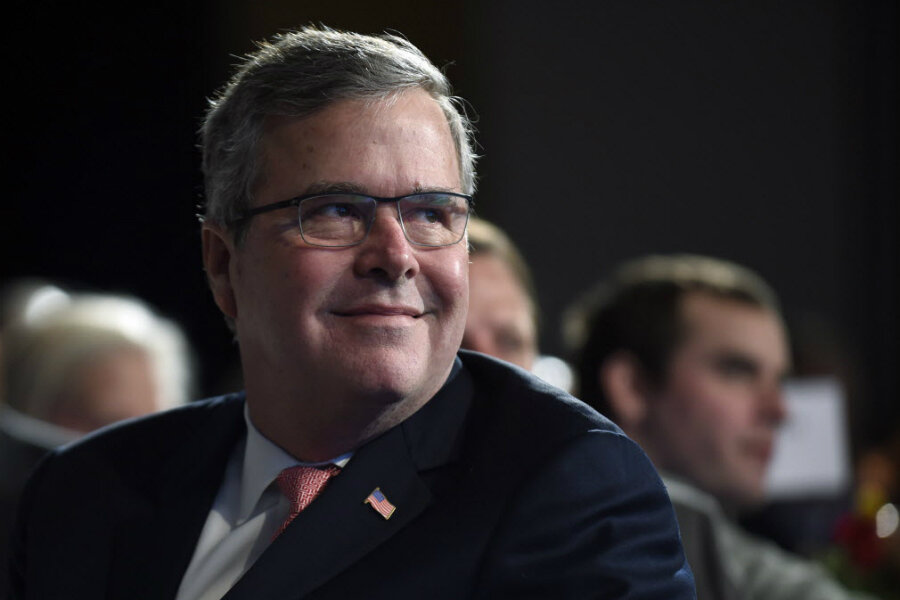Why the 'donor class' matters, especially in the GOP presidential scrum
Loading...
The "invisible campaign" describes the ever-lengthening presidential election cycle. A newly prominent group, the "donor class," plays a key role in spurring on this two-year-plus process.
Actually, big contributors have always been important in presidential campaigns. But never more so than then wide-open 2016 Republican presidential scrum (and to a lesser extent on the Democratic side, where Hillary Rodham Clinton is seen as the odds-on favorite.)
Several leading GOP candidates are currently courting the donor class, a term minted by then-New York Times columnist Bob Herbert in July 1998, as “a tiny group – just one-quarter of 1 percent of the population – and it is not representative of the rest of the nation. But its money buys plenty of access.”
Former Florida Gov. Jeb Bush (R) is a favorite of the 2016 donor class. To the detriment of potential rivals. “Some potential supporters of New Jersey Gov. Chris Christie and Florida Sen. Marco Rubio are already saying they will instead back Jeb Bush if he runs for president, illustrating the new challenge both men face with Bush now likely to be a 2016 candidate,” NBC News reported in December 2014.
The influence of big donors can be overstated. After all, individual would-be contributors can only give about $2,600 each election cycle – including primaries and general elections that's around $5,200. That’s pocket change for this group of wealthy business executives, trial lawyers, trust-fund babies, etc.
But donor-class members are able to bundle these small contributions from dozens, even hundreds of other people of means. Once these pooled contributions reach the six- or even seven-figure range, they can lead to ambassadorial appointments in the favored candidate’s presidential administration, among other perks and goodies.
For 2016, New Jersey Gov. Chris Christie will be well-acquainted with donor class members. The 2012 campaign book "Double Down" by Mark Halperin and John Heilemann reported that members of the New York financial elite implored Christie to seek that year’s Republican presidential nomination, which ultimately went to Mitt Romney.
Campaign finance reformers have tried to pare back donor class clout. The McCain-Feingold law, enacted nearly 13 years ago, sharply limited how much individual contributors could give to the national political parties. But the money inevitably found its way back to the political process, through outside "super PACs," ostensibly independent from candidates.
Now big givers have another outlet for their campaign largesse. The December 2014 catch-all $1.1 trillion federal spending law included a last-minute provision that allows an individuals to give more than $776,000 annually to political parties. So each side's eventual presidential nominees will potentially benefit from mega-donor-class giving.
Chuck McCutcheon and David Mark write their "Speaking Politics" blog exclusively for Decoder Voices.





